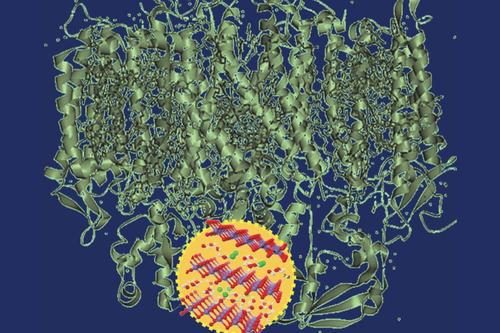Spinach underpins photosynthetic manganese dioxide production three billion years ago
Interdisciplinary research team at Freie Universität uses X-ray experiments at the Berlin Electron Synchrotron (BESSY) to show that photosystems from spinach can form manganese oxide nanoparticles.
News from Dec 04, 2020
Scientists at Freie Universität and Einstein Fellow Robert Burnap from Oklahoma have demonstrated that today’s photosystem II can form birnessite-type oxide particles efficiently, thus supporting an evolutionary scenario which involves manganese-oxide production by ancestral photosystems.
The researchers isolated the so-called Photosystem II (PSII) from spinach leaves and removed the four manganese atoms which split water and form atmospheric oxygen in today's photosynthesis. These manganese-free photosystems were used to reconstruct what might have taken place billions of years ago in an early form of photosynthesis.
The interdisciplinary team illuminated a 'green soup' of manganese-free photosystems in the presence of small amounts of manganese ions dissolved in water. They observed that the photosystems form manganese oxide nanoparticles within minutes, with 50-100 manganese atoms per photosystem. These nanoparticles resemble a mineral rock called birnessite. The atomic structure was detected by means of X-ray spectroscopy at BESSY, a large-scale research facility of the Helmholtz-Zentrum Berlin (HZB) in Berlin-Adlershof.
The research results were published in the renowned journal Nature Communications.
Keywords
- BESSY
- bioenergetics
- biophysics
- birnessite
- evolution
- Holger Dau
- light-drive
- manganese-oxide nanoparticles
- Nature Communications
- photosynthetic water oxidation
- photosystem
- photosystem II
- PSII
- SFB 1078
- UniSysCat


